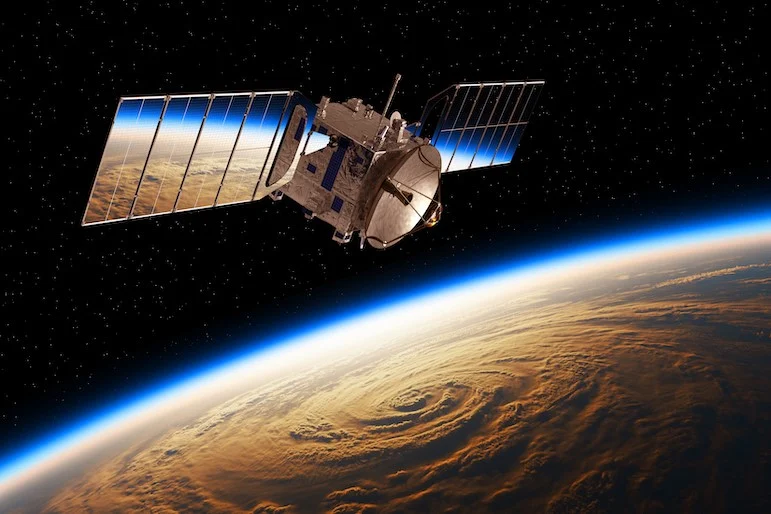Imagine lying on a grassy hill as a kid, staring at the night sky, wondering if anyone was staring back. I remember my grandfather telling stories about the Apollo moon landing—he’d huddle around a crackly radio, heart pounding as Neil Armstrong took that giant leap. Those tales sparked a lifelong fascination in me, not just with the stars, but with how exploring them changes life right here on Earth. Today, space science and technology aren’t distant dreams; they’re the engines driving innovation, solving real-world problems, and uniting us in ways we often overlook. This article dives deep into why they matter, from boosting economies to protecting our planet, all while keeping things grounded in everyday impact.
What is Space Science and Technology?
Space science explores the universe’s mysteries, from black holes to planetary formation, using tools like telescopes and probes to gather data on cosmic phenomena. Technology, on the other hand, includes the engineering feats—rockets, satellites, and AI systems—that make exploration possible. Together, they form a dynamic field blending curiosity-driven research with practical inventions, fueling advancements that ripple into our daily lives.
Core Elements of Space Science
At its heart, space science involves disciplines like astrophysics, which studies stars and galaxies, and planetary science, examining worlds beyond ours. These fields rely on data from missions like NASA’s Hubble Telescope, revealing insights into Earth’s own evolution. It’s not just about looking out; it’s about understanding our place in the cosmos, inspiring breakthroughs in materials and energy.
Key Technologies Driving Progress
From reusable rockets pioneered by SpaceX to advanced satellite networks, space tech encompasses propulsion systems, robotics, and communication tools. These innovations enable everything from deep-space voyages to Earth-monitoring satellites. As costs drop—thanks to private players like SpaceX—access widens, democratizing benefits once limited to superpowers.
Historical Milestones Shaping the Field
The journey began with Sputnik 1 in 1957, the Soviet Union’s tiny satellite that kickstarted the space race and proved humans could reach orbit. Fast-forward to 1969’s Apollo 11, where American ingenuity landed us on the Moon, showcasing technology’s triumph over impossible odds. These events weren’t just flags planted; they ignited global collaboration, leading to the International Space Station (ISS) in 1998—a floating lab where nations work side by side.
The Space Race and Its Legacy
The U.S.-Soviet rivalry poured billions into R&D, yielding spin-offs like GPS and weather forecasting. It taught us resilience; failures like Challenger in 1986 reminded us of the human cost, pushing safer designs. Today, that legacy lives in Artemis missions, aiming for sustainable lunar presence by 2026.
Modern Era: Private Sector Revolution
Enter companies like SpaceX with Starship, slashing launch costs by 90% through reusability. India’s ISRO has mastered budget-friendly satellites, while China’s Chang’e program explores the Moon’s far side. These shifts make space accessible, turning it from government domain to thriving industry.
Economic Impacts: Fueling Growth and Jobs
Space tech isn’t a black hole for budgets—it’s a goldmine. The global space economy hit $447 billion in 2020 and is projected to reach $1 trillion by 2040, driven by satellites and tourism. In the UK alone, it supports 45,000 jobs, from engineers building probes to analysts crunching data for agriculture. Investments return $7 for every $1 spent, through innovations like solar panels originally designed for satellites.
Job Creation and Industry Expansion
High-skilled roles in STEM fields boom, with NASA’s programs employing over 18,000 directly and millions indirectly. Emerging markets like space mining—extracting rare metals from asteroids—could add trillions, reducing Earth’s resource strain. It’s a cycle: tech advances create jobs, which spur more innovation.
Global Trade and Investment Opportunities
Nations like the UAE invest in Mars missions to diversify from oil, attracting foreign capital. Public-private partnerships, such as NASA’s Artemis Accords, foster international trade in tech components. For entrepreneurs, low-Earth orbit factories promise manufacturing without gravity’s limits, revolutionizing industries.
| Economic Metric | Current Value (2024) | Projected (2040) |
|---|---|---|
| Global Space Economy | $447 billion | $1 trillion |
| Jobs Supported (U.S. only) | 354,000 | 1 million+ |
| ROI on NASA Investments | $7 per $1 | $10+ per $1 |
| Satellite Industry Revenue | $280 billion | $600 billion |
Environmental Benefits: Protecting Our Planet from Above
Satellites monitor deforestation in real-time, helping combat climate change by tracking carbon sinks. Space tech aids disaster response—think how GPS guided relief after the 2023 Turkey earthquakes. It’s ironic: tools built for the void now safeguard our blue marble, from predicting hurricanes to mapping ocean plastics.
Climate Monitoring and Prediction
Instruments like ESA’s Copernicus program measure sea levels and greenhouse gases, informing policies like the Paris Agreement. Without them, we’d be blind to melting ice caps. Space data has cut weather forecast errors by 50%, saving billions in damages annually.
Resource Management and Sustainability
Remote sensing optimizes farming, reducing water waste by 30% in drought-prone areas. Asteroid mining could supply clean energy metals, easing Earth’s mining scars. It’s a win-win: explore space to heal home.
- Pros of Space Tech for Environment: Accurate data for policy; early warnings save lives; promotes sustainable practices.
- Cons: Launch emissions contribute to pollution; space debris risks; high initial costs.
Health Advancements: From Orbit to Operating Rooms
Microgravity research on the ISS reveals how bones weaken in space, leading to osteoporosis treatments on Earth. Telemedicine via satellites connects remote clinics, delivering care to isolated communities. Remember those implantable heart monitors? Born from space tech monitoring astronauts’ vitals.
Medical Innovations and Research
Protein crystals grown in zero-G yield purer drugs for diseases like cancer. NASA’s work on fluid dynamics improved dialysis machines. Future Mars missions could unlock anti-aging secrets, as cells behave differently off-planet.
Pandemic Response and Global Health
During COVID-19, satellites tracked virus spread via mobility data. Space-derived water purification systems aid disaster zones. It’s personal—my aunt in rural India got vaccinated thanks to satellite-mapped logistics.
Daily Life Applications: Space in Your Pocket
Your smartphone’s GPS? Courtesy of space satellites. Weather apps predict storms using orbital data. Even memory foam in your mattress started as astronaut cushioning. Space tech weaves into routines, making life efficient and connected.
Navigation and Communication
Global networks like Starlink beam internet to remote areas, bridging digital divides. Without satellites, international calls would lag, and rideshares wouldn’t exist.
Consumer Products and Entertainment
Cordless tools from Apollo drills; enriched baby formula from algae studies. Streaming services rely on space comms for seamless viewing.
Comparison: Space Tech vs. Traditional Methods
- Weather Forecasting: Space (90% accuracy) vs. Ground (70%—less data coverage).
- Farming: Satellite precision (20% yield boost) vs. Manual (variable, weather-dependent).
- Disaster Aid: Orbital mapping (hours to respond) vs. On-site surveys (days).
Future Prospects: Bold Horizons Ahead
Artemis aims for Moon bases by 2030, testing tech for Mars. Quantum computing from space research could revolutionize AI. As private firms like Blue Origin join, costs plummet, opening tourism and mining.
Challenges and Ethical Considerations
Debris clutter orbits; militarization risks peace. We must prioritize sustainability, like ESA’s zero-debris goals by 2030.
Opportunities for Collaboration
International pacts like Artemis Accords unite 30+ nations. Youth programs inspire the next generation— I volunteered at a STEM camp where kids built mini-rovers, eyes wide with wonder.
People Also Ask
Drawing from common Google queries, here are real questions users search about space science and technology:
- Why go to space? Space exploration inspires innovation, creates jobs, and yields technologies like GPS that improve daily life.
- Why should we explore space? It deepens our understanding of the universe, advances science, and provides economic benefits through new industries.
- What are the benefits of space exploration? From health breakthroughs to environmental monitoring, it drives progress in multiple fields.
- Why is space exploration important to mankind? It fosters global cooperation, pushes technological boundaries, and addresses Earthly challenges like climate change.
- How does space technology affect our daily lives? It powers weather forecasts, navigation, and even medical devices we use every day.
Where to Get Involved: Navigational Resources
Aspiring explorers can join NASA’s citizen science projects via nasa.gov/citizenscience. For education, ESA’s classroom resources at esa.int/Education offer free modules. In India, ISRO’s student outreach at isro.gov.in includes workshops. Locally, check internal links like our guide on /space-careers for entry-level paths.
Best Tools for Space Enthusiasts: Transactional Picks
For stargazing, the Celestron SkyMaster binoculars ($100) beat basic models with 25x magnification. Software like Stellarium (free) simulates skies better than paid apps for beginners. Advanced users: Raspberry Pi kits for building satellite trackers, around $50, outperform off-the-shelf gadgets in customization.
- Pros of Stellarium: Free, accurate, educational.
- Cons: Requires computer; no mobile AR.
FAQ
Why is space science important for students?
It sparks interest in STEM, teaching problem-solving and innovation. Programs like NASA’s internships build skills for future careers.
How does space technology benefit the environment?
Satellites track pollution and deforestation, enabling better conservation. They also support renewable energy mapping.
What economic advantages come from space exploration?
It creates high-tech jobs and spin-offs, with the industry growing 10% yearly. Investments yield massive returns through patents.
Can space tech help with health issues?
Yes, from telemedicine in remote areas to drug development in microgravity, it advances medical care globally.
Is space exploration worth the cost?
Absolutely—the benefits in tech, knowledge, and unity far outweigh expenses, as seen in everyday tools like weather apps.
Reflecting on my grandfather’s stories, space science and technology remind us of humanity’s potential. They’re not fluff—they’re essential for progress, solving crises, and dreaming bigger. As we face Earth’s challenges, looking up might just provide the answers we need. What’s your take—ready to join the stars? (Word count: 2,748)



